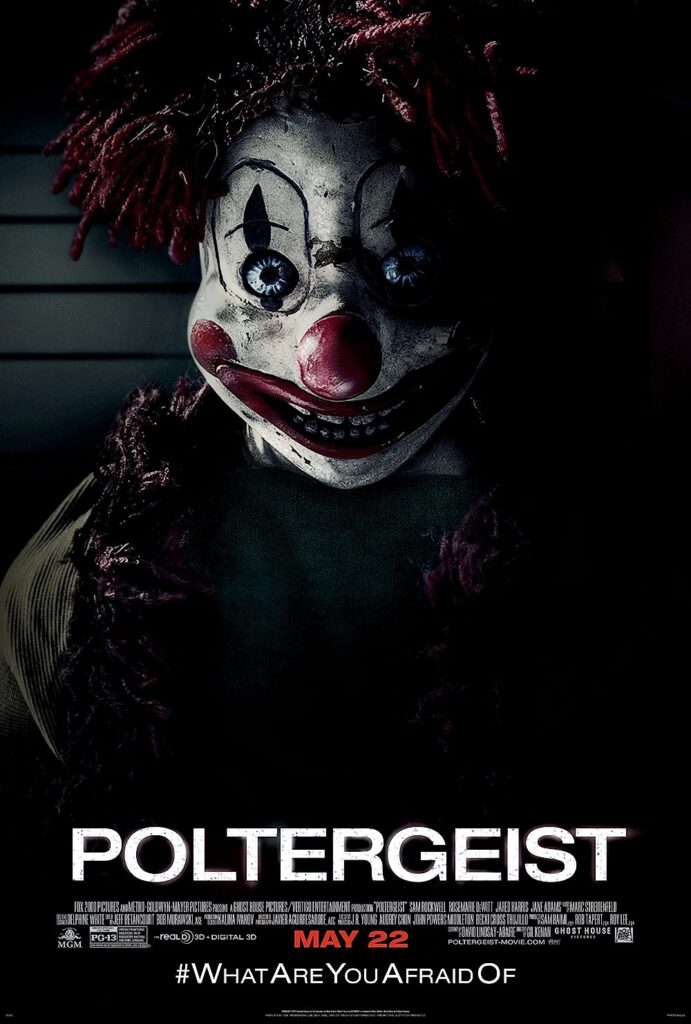Have you ever wondered what the difference is between a ghost and a poltergeist? They are both mysterious entities that are often associated with hauntings and paranormal activity, but there are some key distinctions between the two. In this article, we will dive into the world of the supernatural and explore the characteristics and behaviors of ghosts and poltergeists. So, if you’re curious to learn more about these spooky entities, keep reading!
Ghosts are typically thought of as the spirits of deceased individuals who have not yet moved on to the afterlife. They are often described as being transparent or semi-transparent, and can sometimes be seen or heard by those who have a heightened sensitivity to the supernatural. Ghosts are known to haunt specific locations, such as old houses or historical buildings, and may appear as apparitions or as fleeting movements or shadows. They are believed to be the remnants of human souls that have unfinished business or are reluctant to let go of the earthly realm.
On the other hand, poltergeists are a different breed altogether. The word “poltergeist” actually comes from the German words for “noisy” and “spirit,” and it accurately describes their nature. Unlike ghosts, poltergeists are not typically associated with the spirits of the deceased. Instead, they are believed to be a form of psychic energy or manifestation that is often associated with a living person, usually an adolescent. Poltergeist activity is characterized by objects being moved or thrown, loud noises, and even physical attacks on individuals. It is thought that this energy is often caused by suppressed emotions or psychic abilities, and that it can be influenced or triggered by an individual’s mental or emotional state.
So, as you can see, there are some distinct differences between ghosts and poltergeists. Ghosts are typically associated with the spirits of the deceased, while poltergeists are often linked to living individuals and their suppressed psychic energy. Both entities can be fascinating and mysterious, and studying them can provide a deeper understanding of the supernatural world. In our upcoming articles, we will explore these entities in more detail, delving into their characteristics, behaviors, and the various theories and beliefs surrounding them. Stay tuned for a journey into the unknown!
Definition of Ghost and Poltergeist
What is a ghost?
A ghost is a supernatural entity or spirit that is believed to exist after death. According to popular belief, when a person dies, their soul may linger in the physical world instead of moving on to the afterlife. Ghosts are often depicted as transparent apparitions or shadows and are said to have the ability to interact with the living.
What is a poltergeist?
In contrast, a poltergeist is not considered to be an actual spirit or ghost of a deceased person. The term “poltergeist” comes from the German words “poltern” (to make a noise) and “geist” (spirit). It is believed that poltergeist activity is caused by intense energy or psychic disturbances rather than the presence of a conscious entity.
Appearance and Manifestation
Physical appearance of ghosts
When it comes to physical appearance, there are various descriptions of ghosts. Some people claim to see full-bodied apparitions, while others believe ghosts appear as orbs of light. In many cases, they are described as translucent or transparent figures, often dressed in clothing from the era they are believed to have lived in. Ghosts can also manifest as shadowy figures.
Physical appearance of poltergeists
Unlike ghosts, poltergeists do not have a consistent physical appearance. They are typically associated with loud noises, objects moving or being thrown, and other disruptive phenomena. There is no specific form or shape attributed to poltergeists, as their manifestations focus more on the disruption of the environment rather than a visible presence.
Manifestation of ghosts
Ghosts are often believed to appear in specific locations, such as old houses, cemeteries, or places where significant emotional events have occurred. They can materialize briefly or linger for extended periods, with some reports suggesting that they can communicate with the living through various means, such as sounds, whispers, or even through electronic devices.
Manifestation of poltergeists
Poltergeist activity is characterized by the disturbance of objects and physical phenomena. This can include objects being thrown, doors slamming shut, or furniture being rearranged seemingly on its own. Poltergeist manifestations often occur in the presence of a specific individual, known as the “focus” or “agent,” who may have no control over the activity.

NUATE Spirit Box SB11 Ghost Hunting Equipment Radio Sweep Ghost Box
Behavior
Ghostly behavior
Ghosts are commonly associated with a range of behaviors. Some ghosts are said to be harmless, simply replaying scenes from their past or watching over loved ones. Others may be more mischievous, moving objects or making noise to get attention. There are also reports of ghosts who are malevolent and cause fear or harm to those who encounter them.
Poltergeist activity
Poltergeists are known for their disruptive and often mischievous behavior. They can throw objects, create loud bangs, and even physically harm individuals. Poltergeist activity is typically short-lived, lasting for weeks or months, and fades away on its own. The activity is often attributed to the psychological or emotional state of the focus or agent.
Interaction with Humans
Ghost-human interaction
Ghost-human interactions can vary greatly depending on the individual’s belief system and personal experiences. Some people claim to have had direct communication with ghosts, whether through telepathic messages, dreams, or even physical contact. Others may only have indirect experiences, such as witnessing objects moving or hearing unexplained sounds.
Poltergeist-human interaction
Poltergeist activity is often triggered or influenced by human presence, specifically the emotional or psychological state of the focus or agent. The disturbances caused by poltergeists are typically unpredictable and chaotic, making interactions with humans unsettling and sometimes frightening. Attempts to communicate with poltergeists often yield little to no response.

Haunting Locations
Common haunting locations for ghosts
Ghosts are often associated with specific locations that are believed to be haunted. These locations can include old houses, castles, battlefields, or places with a history of tragedy or emotional significance. It is believed that ghosts may be drawn to these places due to their attachment to certain memories or unfinished business.
Common haunting locations for poltergeists
Poltergeist activity can occur in various locations and is not necessarily tied to a specific place. Unlike ghosts, poltergeists are typically associated with the presence of a specific individual, rather than a particular location. However, reports of poltergeist activity often mention homes or rooms where the focus or agent spends a significant amount of time.
Beliefs and Folklore
Ghost beliefs and folklore
Beliefs and folklore surrounding ghosts vary across different cultures and regions. In some cultures, ghosts are revered as ancestral spirits or guides, while in others, they are feared and considered to be malicious entities. Many ghost stories and legends have been passed down through generations, contributing to a rich tapestry of supernatural beliefs.
Poltergeist beliefs and folklore
Poltergeist activity has long been associated with paranormal occurrences. It has been interpreted as the result of demonic possession, witchcraft, or psychic energy. Some folklore suggests that poltergeists are attracted to sensitive or troubled individuals, as they may unknowingly generate the energy that fuels the disturbances.

Explanations and Theories
Potential explanations for ghosts
Numerous theories attempt to explain the existence of ghosts. Some propose that ghosts are residual energy or imprints left behind by intense emotions or traumatic events. Others suggest that ghosts are a manifestation of the human mind, a projection of hidden desires or unresolved conflicts. Paranormal investigators continue to explore these theories, seeking empirical evidence to support or refute them.
Potential explanations for poltergeists
Poltergeist activity has been the subject of much speculation and debate. Some theories propose that the energy responsible for poltergeist disturbances is generated unconsciously by the focus or agent, often during times of emotional distress. Skeptics argue that many poltergeist cases can be attributed to natural phenomena, such as drafts or pranks.
Scientific Research
Scientific studies on ghosts
Scientific research on ghosts is a topic of ongoing interest and inquiry. While it is challenging to study a phenomenon that is inherently elusive and subjective, researchers have attempted to investigate reported ghostly encounters using various methods. These include psychological studies, electromagnetic field measurements, and the analysis of audio and visual recordings.
Scientific studies on poltergeists
Poltergeist activity has also attracted scientific interest, although it is often approached from a psychological perspective. Researchers have sought to understand the psychological factors that may contribute to manifestations of poltergeist activity, such as stress, trauma, or even unconscious actions by the agent. However, conclusive scientific evidence regarding the existence of poltergeists remains elusive.

Cultural Depictions
Ghost representation in popular culture
Ghosts have captivated the human imagination for centuries, and their portrayal in popular culture reflects this fascination. They have been featured in countless books, movies, and television shows, ranging from friendly and helpful spirits to vengeful and terrifying entities. Ghost stories continue to be shared around campfires and Halloween parties, keeping the tradition alive.
Poltergeist representation in popular culture
Poltergeists have also made their mark in popular culture, often serving as the centerpiece of horror films and novels. These depictions typically emphasize the chaotic and violent nature of poltergeist activity, feeding into the fear and intrigue surrounding these supernatural phenomena.
Conclusion
In conclusion, while both ghosts and poltergeists are associated with supernatural phenomena, they have distinct differences. Ghosts are believed to be the spirits of deceased individuals and often manifest as apparitions or shadows, with varying degrees of awareness and interaction with the living. In contrast, poltergeists are not considered to be actual spirits but are associated with disruptive physical activity, typically linked to the emotional state of a specific individual. Understanding these differences helps to shed light on the fascinating and enduring mysteries of the paranormal world.
SB7T Spirit Box Paranormal Research Device with Ghost Augustine Flashlight

